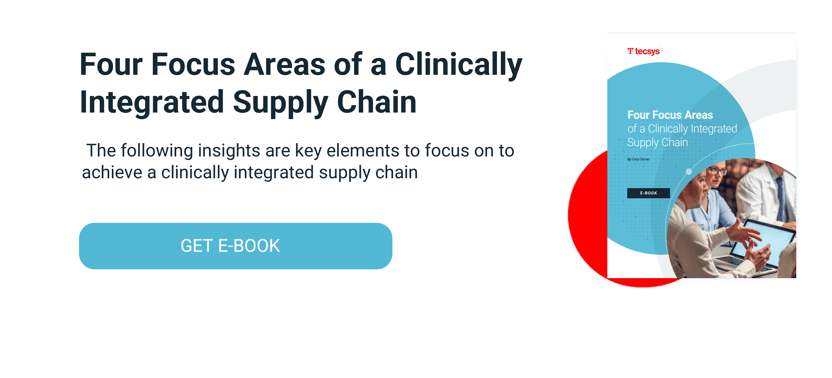The Healthcare Distribution Revolution: Invisible Doesn’t Mean Invincible

This article was originally published on Healthcare Business Today.
When discussing events of the past year or so, the conversation is immediately hijacked by COVID-19; it creeps into nearly every headline of every news organization, and it’s a narrative that will continue for some time because of its fundamental impact on the way businesses will operate moving forward. The healthcare industry experienced significant turbulence; tossed around through waves of instability and logjams, the impressive resolve it has shown in times of a seemingly unending uphill battle is a testament to the strength of the teams that fought so hard to provide care. Nonetheless, the pandemic revealed invisible operational shortcomings that had been bubbling under the surface all along, and exposed supply chain gaps that the industry had never experienced before. As we emerge, though, there is a glimmer of hope among healthcare supply chain leaders as they right the ship and charter a more strategic course in 2021.
The one recurring theme from supply chain leaders around the country is that while their supply chain teams historically had the bandwidth to address one challenge at a time, many healthcare organizations experienced major supply chain breakdowns while trying to source PPE for their clinical staff. As the pandemic created multiple nodes of disruption that stretched resources too thin, even those with the operational fortitude to stay the course were feeling the pain. The promising byproduct of this untenable situation is that healthcare organizations have started exploring new and more strategic efforts that will improve supply chain operations as a whole.
No silver bullet can prevent disruption in the supply chain. But what emerged as a sticking point for many supply chain leaders – and a source of preventable disruption – were gaps in visibility that led to a lack of oversight and control. It wasn’t too far a leap that conversations around consolidated service centers (CSCs) were no longer on a roadmap but instead they were the roadmap. This insourcing provided better visibility and control of supply chain operations when compared to those that relied on third-party vendors and distributors. In that quest for control, healthcare supply chain leaders began examining how they can model their operations in a similar fashion.
Control
In the early days of the pandemic, one major health system in the U.S. struggled to distribute effectively because there was no single source of truth for what limited medical/surgical and pharmaceutical supplies existed in different facilities strewn across multiple campuses. The lack of central control, paired with isolated hoarding, meant that they were being choked out of running the leanest operation possible when it was most needed. It was a wake-up call for them that control over medical/surgical and pharmaceutical supply distribution throughout the continuum – from hospitals to home care – could help ensure each facility gets what it needs when it needs it. Such centralization would make it easier to track supply ordering and usage and make informed decisions based on this data. Some are going even further; because health systems with CSCs must still rely on suppliers to deliver the product they need, some are even setting up their own supply manufacturing operations. No doors are closed right now. Everything is open for discussion.
Visibility
While taking control over their supply chains is a must for healthcare organizations, especially in times of emergency, control in a vacuum is not terribly useful. Fundamental to centralized control is centralized visibility throughout the product lifecycle. A key reason why health systems suffered supply shortages during the pandemic is lack of visibility; in fact, control and visibility are equal. Disconnected systems between supply chain and clinical operations, hospitals and non-acute sites, medical/surgical and pharmaceutical supply chains, all prevented supply chain leaders from seeing the bigger picture for strategic, enterprise-wide decision-making.
Connectedness
Health systems must know when, how and in what quantities supplies are used. While some believe all that is needed for supply management is a good enterprise resource planning (ERP) system, this is just one side of the equation; a health system needs a way to connect the ERP to the electronic health record (EHR) in order to form a complete picture. In 2021, supply chain leaders are working to establish end-to-end, connected supply chain operations that provide global visibility into the entire life cycle of medical/surgical and pharmaceutical products—from order through to use on a patient.
Effective healthcare supply chain management is a three-legged stool; only together will control, visibility and connectedness support access to data that permits more strategic decision-making. For the healthcare industry, this pandemic exposed vulnerabilities in one or more of these legs. Now, as healthcare organizations regroup, there is a kindled focus on implementing supply chain technology solutions with dashboards and analytics for proactive versus reactive planning.
With analytics on supply inventory and use in near real-time, supply chain leaders can more effectively manage supplies for reduced cost and waste. Most importantly, they can be alerted to potential supply chain disruptions that could jeopardize care delivery.
Even for those health systems that rely on a distribution partner, in-house business intelligence is an essential line of defense. It is easy to presume that if we contract it out, it will be handled, but without control, visibility and connectedness, we subject ourselves to unknown risks. Data and analytics are critical to communicate what supplies are needed when, and monitor distributor and supplier performance against set goals.
It would be nearly impossible to root out every blind spot in the end-to-end healthcare supply chain. And no supply chain is invincible to global disruptions. But health systems that design their supply chain operations to take control of gaps in visibility are better equipped to flex and rebound more effectively.




